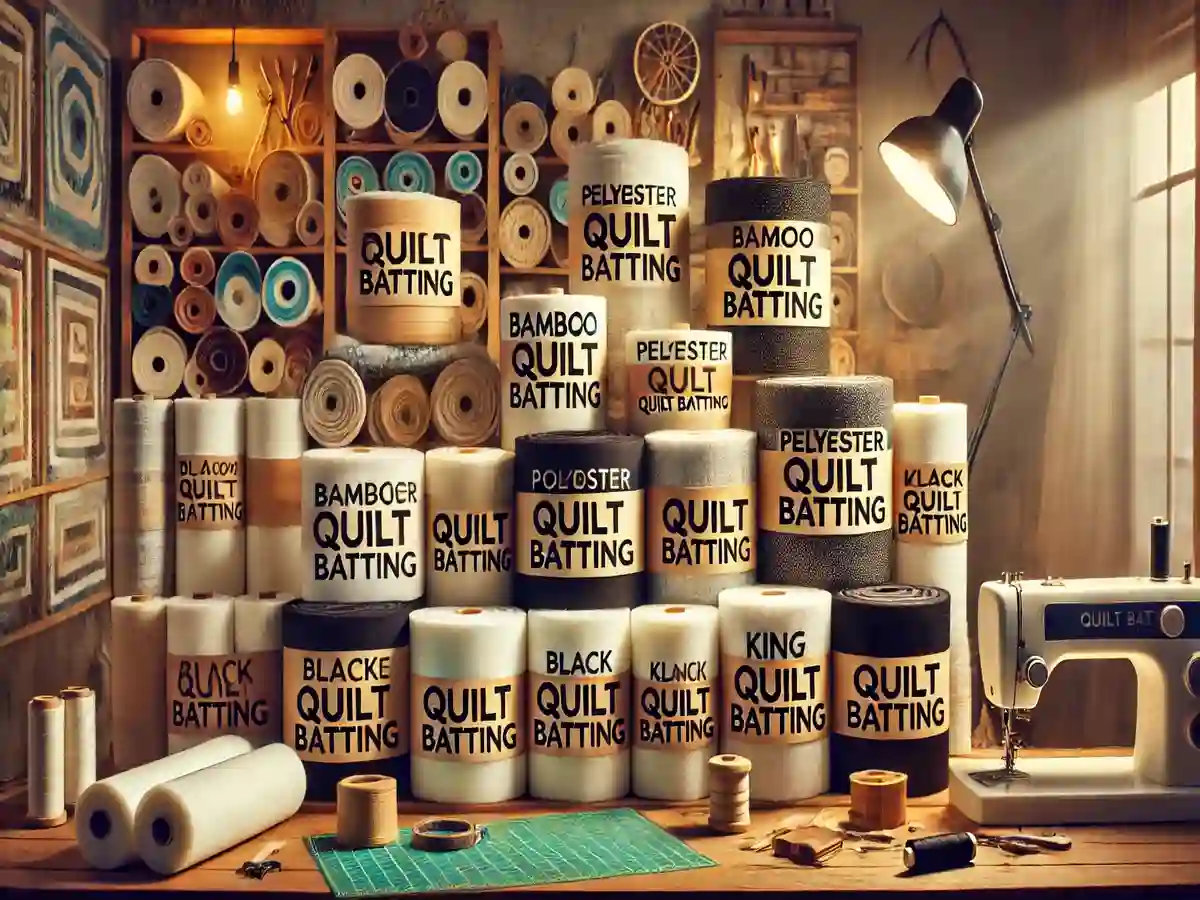Whether you are new to quilting or experienced, creating a masterpiece depends on understanding the different types of quilt batting and how to use them. This article will discuss various materials, sizes, and techniques to help you choose the best quilt batting for your next project.
What Is Quilt Batting?
Quilt batting is the insulating layer placed between the top layer and backing cloth of a quilt. It controls the texture, thickness, and warmth of the final result. Using quilt batting by the roll is convenient for larger projects or continuous quilting, as it offers a variety of materials, colors, and sizes.
Quilt Batting Material Types
1. Bamboo Quilt Batting
Bamboo batting’s ultra-soft texture and environmental friendliness have helped it become somewhat well-known. For year-round quilts, bamboo batting is perfect because it is lightweight and provides superior insulation. Its innate breathability also qualifies it for warmer areas. Quilters who prioritize sustainability often choose bamboo batting due to its eco-friendly manufacturing process.
2. Polyester Quilt Batting
For those looking for cost and longevity, polyester quilt batting is a fantastic choice. It is lightweight, mildew-resistant, and holds its form even after several washings. Polyester batting is ideal for beginning students or for those who will use quilts frequently, like children’s quilts or picnic blankets. Its greater loft also results in a puffier, more textured quilt.
3. Black Quilt Batting
Black quilt batting is specifically designed for dark-colored or black quilts, unlike the more common white or off-white options. This keeps the batting from showing through less expensive materials or seams. For quilters working with darker fabrics, this changes everything since it guarantees a polished, professional finish.
Selecting the Appropriate Size
When choosing batting, it’s important to consider your quilt’s size. For large projects like bed quilts, use king size quilt batting. These pre-cut batting pieces are meant to accommodate huge quilts without requiring stitching several batting sections together. On the other hand, quilt batting by the roll is a flexible and reasonably priced choice if you work on quilts often. Rolls minimize waste by letting you cut batting to the precise quantity you require, thereby guaranteeing you always have the correct amount on hand.
What Makes the Best Batting for Quilts?
Your particular need and taste will determine the best quilt batting for your project. Consider these elements to guide your decision-making process:
- Warmth: For warmth, we suggest opting for wool or high-loft polyester batting, especially for quilts intended for colder regions. A decent choice for moderate warmth is bamboo batting.
- Texture: Cotton batting is a common choice if you want a flat, smooth blanket; bamboo and polyester can give sleek finishes.
- Durability: Perfect for quilts that will be often laundered, polyester batting is quite robust and resists shrinkage.
- Appearance: White batting works best for light or bright-colored quilts; black quilt batting guarantees your quilt looks perfect for darker fabrics.
Tips for Working with Quilt Batting
- Pre-wash if Necessary: One should pre-wash some batting materials, such as cotton, in case they shrink somewhat after washing. Check the manufacturer’s directions for advice on pre-washing.
- Consider Stitching Distance: For quilting stitches, every kind of batting has a maximum recommended distance that helps keep the batting from shifting over time. While cotton may need closer quilting, bamboo and polyester batting usually allow for greater sewing distances.
- Store Properly: If you buy quilt batting by the roll, keep it cold and dry to preserve its quality over time.
Final Notes
Selecting the appropriate batting can significantly impact the final outcome of your king-size heritage quilt or small lap blanket. In order to meet the specific requirements of your project, consider the color, weight, and size of the batting. Every quilter will find everything from the opulence of bamboo quilt batting to the cost and durability of polyester quilt batting. Don’t forget to consider specialty options such as black quilt batting for darker designs or quilt batting available in rolls for ongoing projects. With the right batting, your quilt will be as beautiful as it is functional!

